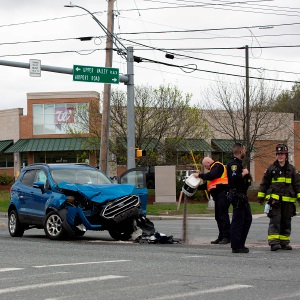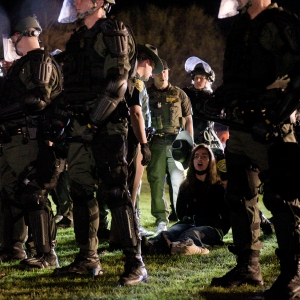Since 2021, Vermont’s religious schools have received an increasing amount of public education money
| Published: 03-13-2024 5:30 PM |
In 2021, court rulings gradually opened the door for religious schools to receive money through Vermont’s school tuitioning program, which allows students in districts without a designated public option to attend the school of their choice.
Then, a landmark June 2022 Supreme Court decision pushed it wide open.
Since the 2020-2021 school year, the public dollars going to explicitly religious schools has increased more than six-fold, reaching more than $1 million in 2022-2023, according to a VTDigger analysis of data provided by the Vermont Agency of Education. And the number of schools receiving the funding has more than doubled over that period, from six to 13, all self-identifying as Christian institutions.
The agency does not categorize certain schools as “religious,” so VTDigger used the schools’ self-identification on websites and other promotional materials to identify which individual private schools had a religious affiliation.
The 2022 Supreme Court decision in Carson v. Makin focused on Maine’s public tuition program, which, much like Vermont’s, gave families public dollars to send their children to schools, both public and private, elsewhere — if their area did not operate a public school.
The high court held that Maine could not award some parents a “public benefit” — tuition money — while in other cases “denying the benefit based on a recipient’s religious exercise,” Chief Justice John Roberts wrote in the 6-3 decision.
Before then, Vermont towns that sent students elsewhere for their education — often known as “sending towns”— have operated in a gray area when it comes to paying tuition at religious schools.
Now, in a landscape where those schools have more complete access to public dollars, they’ve garnered a growing — albeit small — portion of Vermont’s education funding.
Article continues after...
Yesterday's Most Read Articles
 Homeless Upper Valley couple faces ‘a very tough situation’
Homeless Upper Valley couple faces ‘a very tough situation’
 Crane crash on Interstate 89
Crane crash on Interstate 89
 Kenyon: Constitutional rights should trump Dartmouth’s private interests
Kenyon: Constitutional rights should trump Dartmouth’s private interests
 West Lebanon crash
West Lebanon crash
 Editorial: Response to campus protests only adds fuel to the fire
Editorial: Response to campus protests only adds fuel to the fire
In 2020-21, religious schools received about $172,000; in 2021-22, they received $594,000; and in 2022-23, they received $1,050,000. Over those three years, the overall number of religious schools receiving public dollars went from from six to 10 and then 13.
Public money going to religious schools still makes up a small percentage of the total amount going to private schools. The total amount of education fund dollars going to private schools — sometimes called independent schools — totalled just under $52,785,000 in 2022-2023, putting the religious school total at under 2%. (This is dwarfed by the overall $1.58 billion in education spending in the 2022-23 school year.)
In Vermont, critics of religious schools receiving public money have pointed to state law they say directly contradicts the practice. The state’s constitution includes the “compelled support clause” — language that protects Vermonters from being forced to support a religion that is “contrary to the dictates of conscience.”
Opponents also point to some religious schools that have attempted to sidestep Vermont’s anti-discrimination rules. In applications to the State Board of Education last year, the heads of two Vermont Christian schools sought approval for tuition money — but hinted that they might not follow all of Vermont’s anti-discrimination laws.
Now, some public school advocates and leaders have taken issue with another element of the funding situation: religious schools seemingly ‘inflating’ their tuition rates to public schools, pointing to the large difference between what several schools charge the public education fund and their advertised tuition rates.
Public school districts are required to pay tuition to independent schools up to the average announced tuition rate across Vermont, which is set at $18,266 for a 7th-12th grade student this school year.
Mid Vermont Christian School in Quechee advertises its high school as costing $6,325 for students whose families pay out of pocket. According to Vermont Agency of Education data, Mid Vermont charged a public school district $14,000 per student.
The school drew controversy last year when it forfeited a basketball game out of refusal to play against a transgender student, and subsequently sued state education leaders after the school was barred from athletic competitions.
An email to Mid Vermont asking about tuition costs was answered by Alliance Defending Freedom, a law firm representing the school and one of the country’s preeminent conservative Christian legal groups.
“For the 2023-2024 school year, every high school student at MVCS began with a $14,000 tuition bill. Some ended up paying the full amount, others did not,” Ryan Tucker, a lawyer for the firm, wrote in an emailed statement, crediting “generous support of donors, foundations, MVCS’s endowment, and its fundraising” for providing scholarships.
Tucker wrote that MVCS actually “comes at a great discount,” noting that other school districts charge over $20,000 to public school districts. Some public schools did charge more than $20,000 in public tuition per student last school year, though private schools were typically capped at the average cost statewide — $17,278 for 7th-12th graders.
In another case, The School of Sacred Heart St. Francis de Sales, a religious school in Bennington, advertises its tuition at $5,430. Last year, a public school district paid up to $16,000 to send a student to the school. A representative of the school did not respond to multiple emails requesting comment.
Michael Clark is the superintendent of the Grand Isle Supervisory Union, which does not have a high school. Some students in the district attend Rice Memorial High School, a private Catholic school in South Burlington, and Clark said he didn’t know how much the school charged until he received the bill.
Clark said Rice is charging $18,150 — more than the $13,500 tuition rate for the 2024-25 school year the school has on its website, even when including other fees. Rice has received the most public tuition fund dollars of any religious school in each of the last two years, according to agency of education data, and the school charged an average tuition to public districts of $16,500 last school year.
Megan Shrestha, who leads marketing and communications for Rice, said in an email that the “cost to educate a student” is $19,150, “with the balance of the tuition subsidized by donations from the Rice community and the Rice Cathedral Fund, an endowment that exists to fill the tuition gap.”
Donations and the cathedral fund “are for families that cannot utilize public tuition dollars,” Shrestha said.
Clark traced the problem to a lack of transparency about tuition rates on the part of some private schools. While public schools must post their tuition rate, school leaders say many private schools, not just religious ones, aren’t following the same practice.
“I think that our independent schools should have to play by the same rules as our public schools,” Clark said. “All of our independent schools should have to have an announced tuition rate that they’re charging everybody.”
Tim Newbold is the head of school at The Village School of North Bennington, and president of the Vermont Independent School Association. He said the association, which does not include any religious schools, recommends publishing a tuition rate publicly.
“Most of our members publish a tuition rate, and we believe it’s best practice,” Newbold said. “The position of VISA is that schools should not charge districts more than the announced tuition rate.”
He also pointed out that public schools accepting tuition students are able to back bill for additional expenses, whereas private schools cannot.
The Vermont-National Education Association, the union representing public school educators, has spoken in favor of private schools listing a tuition rate for sending districts.
“The sending school districts are subsidizing the tuitions of other students,” Don Tinney, Vermont NEA president, said in an interview.
Tinney contrasted the practices of private schools that don’t advertise a public tuition cost with those of Vermont’s “four historical academies” — Thetford Academy, Lyndon Institute, St. Johnsbury Academy and Burr and Burton — all of which do post their tuition rates.
The Sharon Academy in Sharon, the Village School of North Bennington, the Mountain School at Winhall and the Long Trail School in Dorset are among other private schools receiving the most public dollars. All four advertise tuition rates to families that are either comparable to or greater than what is charged the sending districts.
“It raises many questions particularly in a time when our public schools are struggling to pass budgets, a time when our public schools are struggling to meet the needs of all students,” Tinney said, pointing to the rising cost of education in Vermont.
Lawmakers, Tinney argued, could require private schools to follow the same tuition rules as public schools, thereby increasing accountability.
“It comes down to fairness in many ways,” he said.


